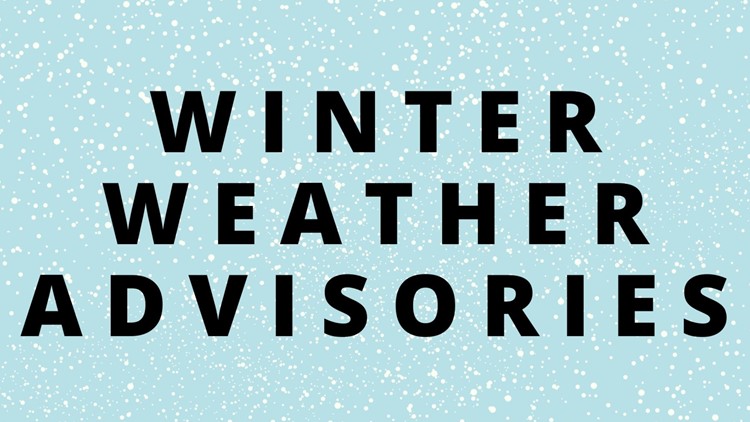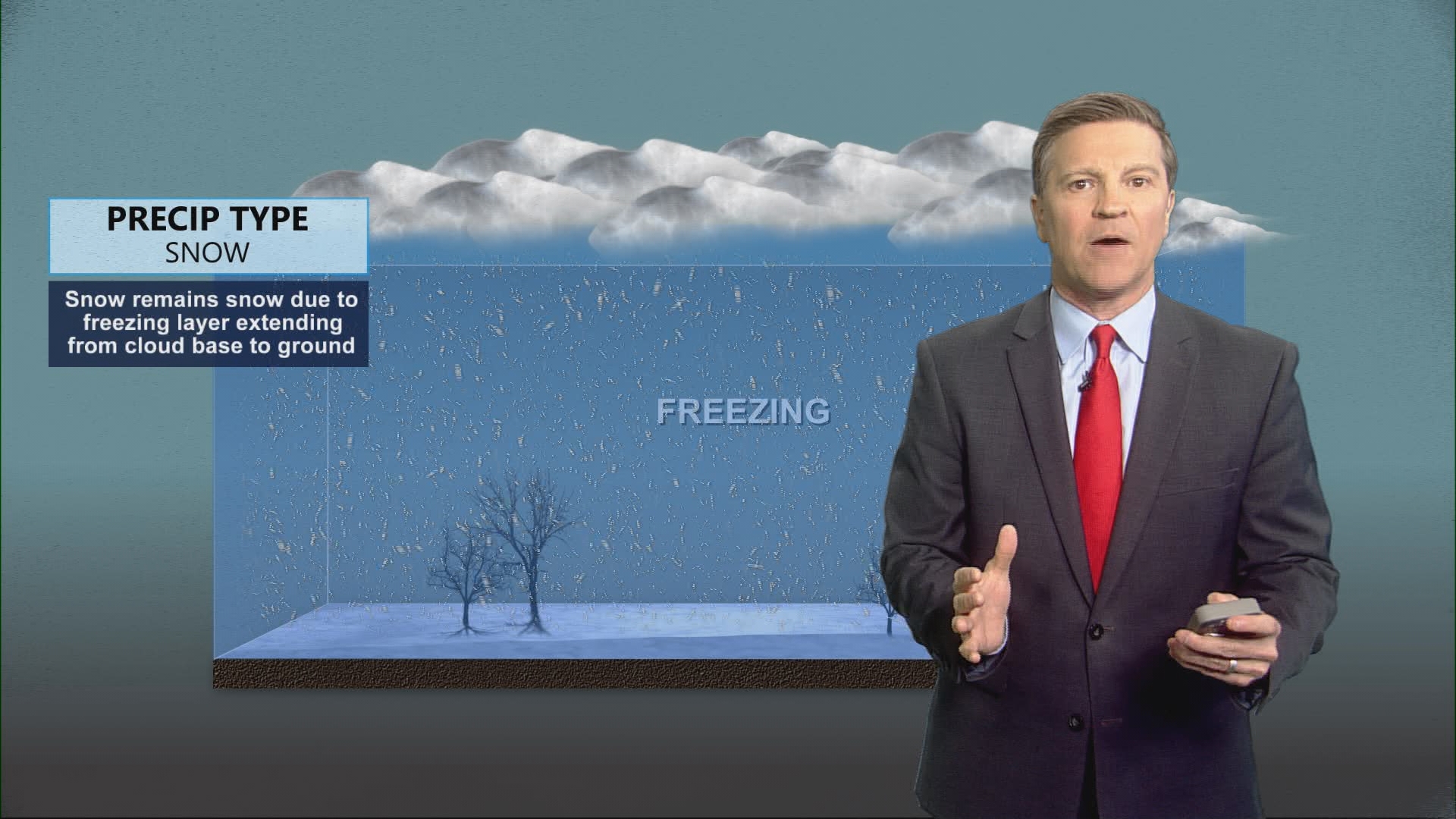JACKSONVILLE, Fla. — Do you remember the Winter Storm of January 2018? That's the last time the Jacksonville area was under any winter weather advisories, watches, or warnings. Even then, a lot of us needed a refresher as to what the certain products meant.
First of all, winter weather related Warnings, Watches and Advisories are issued by your local National Weather Service office. For southeast Georgia and northeast Florida, that's the NWS Jacksonville office.
Each office around the country knows the local area and will issue Warnings, Watches or Advisories based on local criteria. For example, the amount of snow that triggers a “Winter Storm Warning” in the Northern Plains is typically much higher than the amount needed to trigger a “Winter Storm Warning” in the Southeast.
In Jacksonville, a Winter Storm Warning would be issued if there was a threat to transportation due to frozen precipitation. Our area would most likely see (or has seen in recent years) Winter Storm Watches or Warnings, and Wind Chill Advisories.
But for what it's worth, here's a breakdown of the different products NWS offices issue around the country because of winter weather:
- Blizzard Warnings are issued for frequent gusts greater than or equal to 35 mph accompanied by falling and/or blowing snow, frequently reducing visibility to less than 1/4 mile for three hours or more. A Blizzard Warning means severe winter weather conditions are expected or occurring. Falling and blowing snow with strong winds and poor visibilities are likely, leading to whiteout conditions making travel extremely difficult. Do not travel. If you must travel, have a winter survival kit with you. If you get stranded, stay with your vehicle and wait for help to arrive.
- Winter Storm Warnings are issued for a significant winter weather event including snow, ice, sleet or blowing snow or a combination of these hazards. Travel will become difficult or impossible in some situations. Delay your travel plans until conditions improve.
- Ice Storm Warnings are usually issued for ice accumulation of around 1/4 inch or more. This amount of ice accumulation will make travel dangerous or impossible and likely lead to snapped power lines and falling tree branches. Travel is strongly discouraged.
- Wind Chill Warnings are issued for a combination of very cold air and strong winds that will create dangerously low wind chill values. This level of wind chill will result in frostbite and lead to hypothermia if precautions are not taken. Avoid going outdoors and wear warm protective clothing if you must venture outside. See the NWS Wind Chill Chart.
- Lake Effect Snow Warnings are issued when widespread or localized lake induced snow squalls or heavy showers are expected to produce significant snowfall accumulation. Lake effect snow usually develops in narrow bands and impacts a limited area. These bands can produce very heavy snow with sudden restrictions in visibility. Driving conditions may become hazardous at times.
- Winter Storm Watches are issued when conditions are favorable for a significant winter storm event (heavy sleet, heavy snow, ice storm, heavy snow and blowing snow or a combination of events.)
- Wind Chill Watches are issued when there is the potential for a combination of extremely cold air and strong winds to create dangerously low wind chill values. See the NWS Wind Chill Chart.
- Winter Weather Advisories are issued when snow, blowing snow, ice, sleet, or a combination of these wintry elements is expected but conditions should not be hazardous enough to meet warning criteria. Be prepared for winter driving conditions and possible travel difficulties. Use caution when driving.
- Wind Chill Advisories are issued when low wind chill temperatures are expected but will not reach local warning criteria. Extremely cold air and strong winds will combine to generate low wind chill readings. If you must venture outdoors, take precautions against frostbite and hypothermia. See the NWS Wind Chill Chart.
- Lake Effect Snow Advisory are issued for widespread or localized lake effect snowfall accumulation (and blowing snow) remaining below warning criteria. Expects lake effect snow showers and assume travel will be difficult in some areas. Some localized snow bands will be intense enough to produce several inches in a few areas with sudden restrictions in visibility.
Here are some more key terms to understand:
- Freezing Rain: Rain that freezes when it hits the ground; creating a coating of ice on roads, walkways, trees and power lines.
- Sleet: Rain that turns to ice pellets before reaching the ground. Sleet also causes moisture on roads to freeze and become slippery.
- Wind Chill: A measure of how cold people feel due to the combined effect of wind and cold temperatures; the Wind Chill Index is based on the rate of heat loss from exposed skin. Both cold temperatures and wind remove heat from the body; as the wind speed increases during cold conditions, a body loses heat more quickly. Eventually, the internal body temperature also falls and hypothermia can develop. Animals also feel the effects of wind chill; but inanimate objects, such as vehicles and buildings, do not. They will only cool to the actual air temperature, although much faster during windy conditions.



